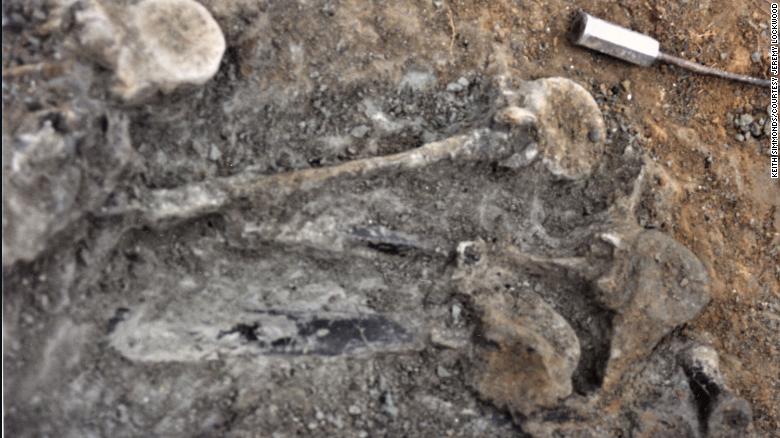Great Argentine find: dinosaur eggs discovered 0:54
(CNN) -
A species of dinosaur was discovered decades after its bones were unearthed, according to a new study.
Scientists have named the ancient reptile Brighstoneus simmondsi, believed to date from the Lower Cretaceous period, about 125 million years ago.
The genus Brighstoneus got its name from Brighstone, an English town near the excavation site.
Simmondsi is a nod to hobbyist collector Keith Simmonds, who found the specimens.
Simmonds originally found the bones in 1978 on the Isle of Wight, an island off the southern coast of England.
The specimens were stored at the Dinosaur Isle museum in Sandown on the Isle of Wight until they were examined more than 40 years later for a different study.
Simmonds found the bones in 1978 on the Isle of Wight, England.
"It's quite common, if not the most common, these days to discover new dinosaurs in museum cellars rather than in the field," said study author Jeremy Lockwood, a doctoral student at London's Natural History Museum. and the University of Portsmouth in the UK.
They find a colony of dinosaurs in Argentina, discover their eggs and that they lived in society
At the time, Lockwood was conducting research on the diversity of large herbivorous iguanodont dinosaurs, which included the Iguanodon and Mantellisaurus atherfieldensis, the most common dinosaur fossil specimens found so far on the island.
An accidental discovery
After closely examining the bones, Lockwood realized that he had a new species of dinosaur on his hands.
advertising
Both the Iguanodon and Mantellisaurus had a straight, flat nose, while the Brighstoneus had a rounded one, he said.
Brighstoneus also had more teeth, designed for chewing, Lockwood added.
In the Lower Cretaceous period, grass and flowering plants weren't widely available, so the dinosaur likely had to eat tough plants like pine needles and ferns, he said.
Using the bones of the thigh and femur, the scientists estimated that the dinosaur was about 8 meters (26 feet) long and weighed around 1,000 kilograms (2,200 pounds).
Scientists believe they have found the first dinosaur DNA sample in history
Before this discovery, scientists designated all the delicate bones found on the island as Mantellisaurus, while the largest bones were classified as Iguanodon.
"Brighstoneus shows that there was more diversity in the Lower Cretaceous iguanodons than we thought," Lockwood said.
Built differently
The Brighstoneus specimens were also 4 million years older than the Mantellisaurus bones, so it could be argued that they are unlikely to be of the same species due to the long time between the two, he noted.
Some of the features of the bones, such as the jaw line, are unique to Brighstoneus, said Matthew McCurry, curator of paleontology at the Australian Museum in Sydney and senior lecturer at the University of New South Wales, who was not involved in the study. study.
The longest jaw could contain 28 teeth, a few more than any other closely related species, McCurry said.
Lockwood is interested in investigating whether dinosaur diversity fluctuated over time or remained the same over 1 million years.
The "horned crocodile-faced hell heron" is one of two new dinosaur discoveries on the Isle of Wight
Dinosaur bones can also reveal what Earth looked like millions of years ago, McCurry said.
"Describing new species of dinosaurs is the first step in reconstructing what these ecosystems of the past were like and learning how they changed over time," he said.
The study naming Brighstoneus simmondsi was published Wednesday in the
Journal of Systematic Palaeontology.
Dinosaurs









/cloudfront-eu-central-1.images.arcpublishing.com/prisa/4RITWNCKAZFB3I3MBXYYKH6YDI.jpg)